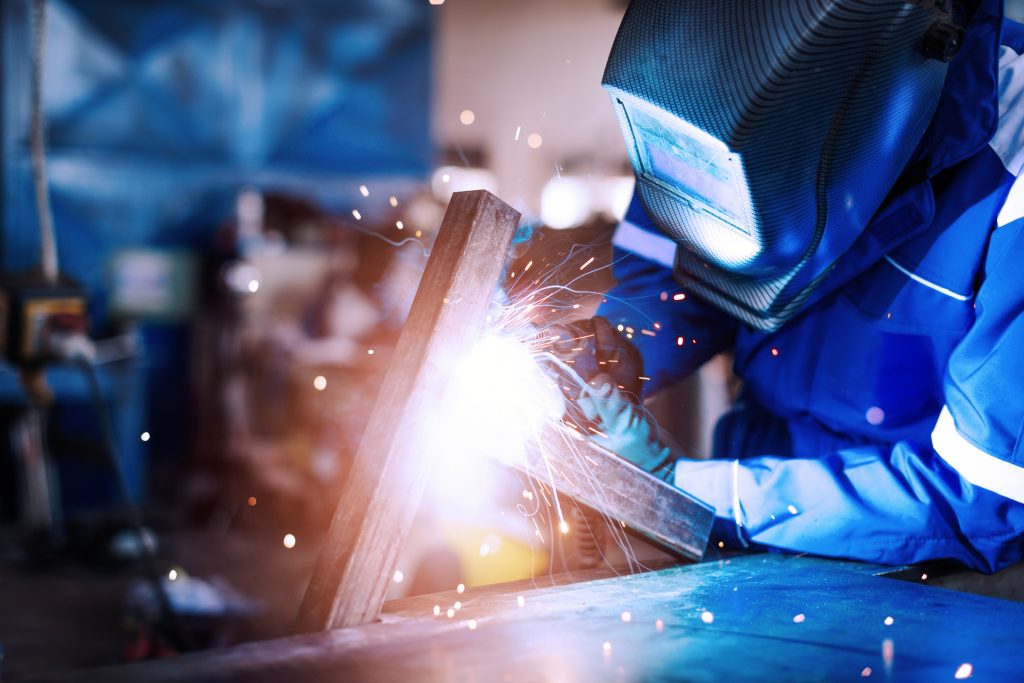Demystifying Steel Fabrication: A Comprehensive Guide

Metal fabrication
Author: Chris Wallage
Published: 23/10/2023
- Steel fabrication is the intricate process of transforming raw steel materials into customised structures, components, or products for various industries
- Steel fabrication is a fundamental part of multiple industries, including construction, manufacturing, infrastructure, energy, and automotive
- Steel offers significant advantages, including exceptional strength and durability, precision in manufacturing, versatility in design, and sustainability through recyclability
In the world of construction, infrastructure development, and manufacturing, steel plays an indispensable role. It’s the backbone of countless structures, from skyscrapers to bridges, and the skeleton of many industrial machines.
But have you ever wondered how steel is transformed from raw material into these functional forms? The answer lies in steel fabrication, a complex and highly specialised process that involves cutting, bending, and assembling steel components to create a wide range of products.
Take a look at our in-depth overview of what steel fabrication is and how it plays a pivotal role in various industries.
What Is Steel Fabrication?
Steel fabrication is the process of transforming raw steel materials into structures, components, or products tailored to specific industrial or construction needs. It involves a series of processes that, when combined, create functional and durable steel products.
These processes include:
- Cutting: The first step is to cut steel plates, sheets, or sections into the required size and shape. This can be done through various methods, such as laser cutting, plasma cutting, or sawing, depending on the precision and thickness needed.
- Bending: To create the desired shapes and forms, steel components are bent using specialised machinery. This is crucial for the development of beams, angles, channels, and other structural elements.
- Welding: Welding is the process of joining two or more pieces of steel together using heat and pressure. It’s a critical aspect of steel fabrication, as it ensures the structural integrity of the final product.
- Machining: Sometimes, steel components require additional processing to achieve a smooth or precise finish. This includes processes like milling, drilling, and grinding.
- Assembly: Once all the individual components are ready, they are assembled to create the final product. This might involve welding, bolting, or riveting, depending on the project requirements.
Steel Fabrication in Various Industries
The versatility of steel fabrication is evident in its wide range of applications across different industries:
- Construction: In the construction industry, steel fabrication is essential for creating structural elements like beams, columns, and trusses. Steel is favoured for its strength, durability, and versatility in accommodating various architectural designs.
- Manufacturing: The manufacturing sector relies on steel fabrication for machinery and equipment production. Custom steel components are used to construct everything from conveyor systems to manufacturing plants.
- Infrastructure: Steel plays a vital role in infrastructure development, from bridges and highways to railways and tunnels. Steel fabrication ensures the creation of durable and safe infrastructure elements.
- Energy: The energy sector uses steel fabrication to create pipelines, storage tanks, and support structures for power plants, oil refineries, and renewable energy facilities.
- Automotive: Steel fabrication contributes to the automotive industry by producing vehicle frames, chassis, and body parts that offer strength, crash resistance, and longevity.
Advantages of Steel Fabrication
Steel fabrication has several advantages, making it a preferred choice for many industries:
- Strength and Durability: Steel is known for its exceptional strength and durability, making it suitable for structures and equipment that must withstand heavy loads and harsh conditions.
- Precision: Modern steel fabrication techniques allow for high precision and accuracy in component manufacturing, ensuring a perfect fit in assembly.
- Versatility: Steel can be adapted to a wide range of applications, offering flexibility in design and customisation.
- Sustainable: Steel is recyclable and environmentally friendly, reducing the carbon footprint of manufacturing and construction projects.
Conclusion
Steel fabrication, as provided by industry leaders like C&C Fabrications, is an essential process that underpins numerous sectors of the economy. Its versatility, strength, and durability make steel an ideal choice for countless applications, from the construction of iconic buildings to the creation of cutting-edge machinery. As industries continue to evolve, steel fabrication will remain at the forefront of innovation, helping to build a stronger and more resilient world.
Get in touch today to see how C&C can enhance your steel fabrications.



